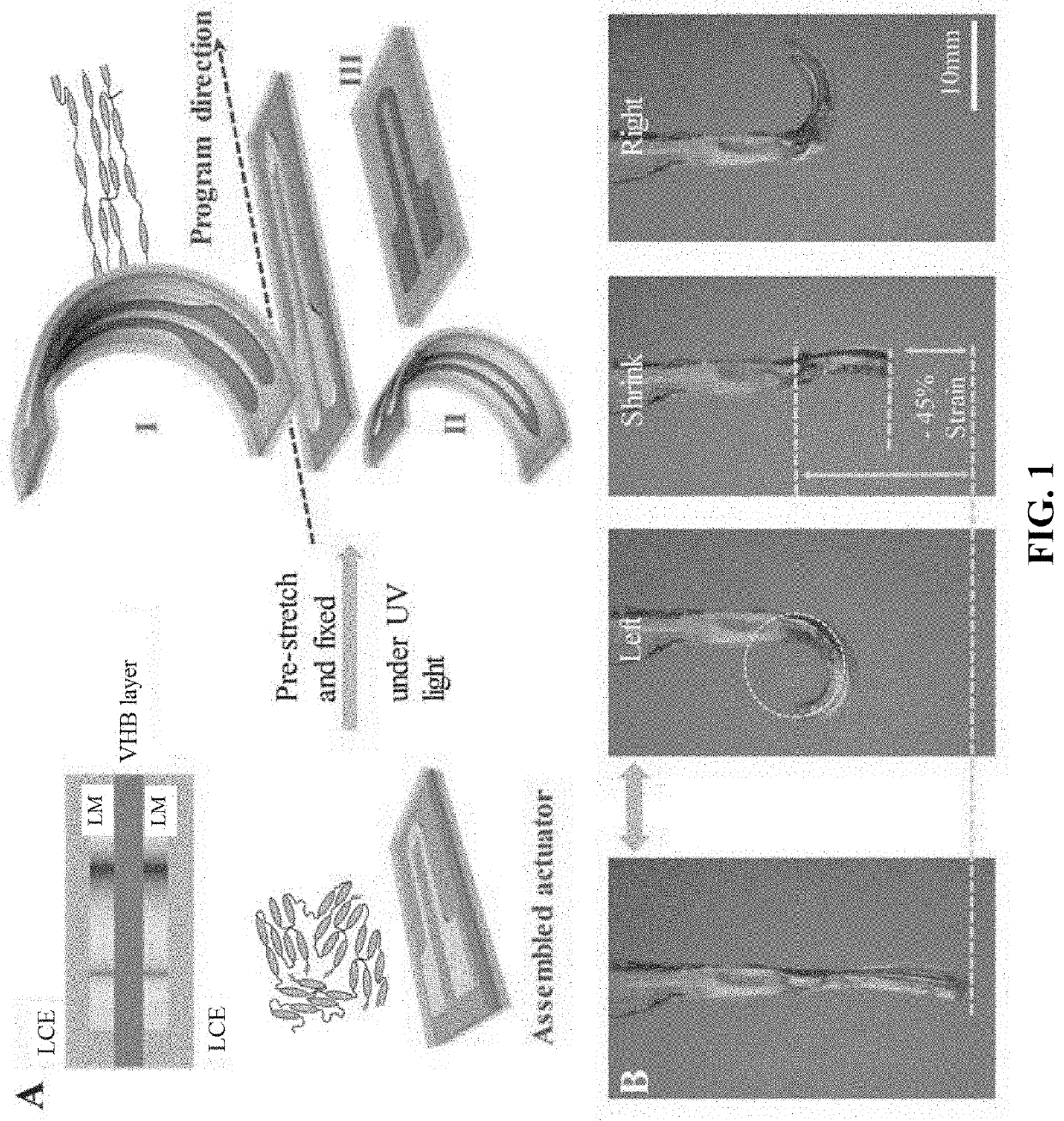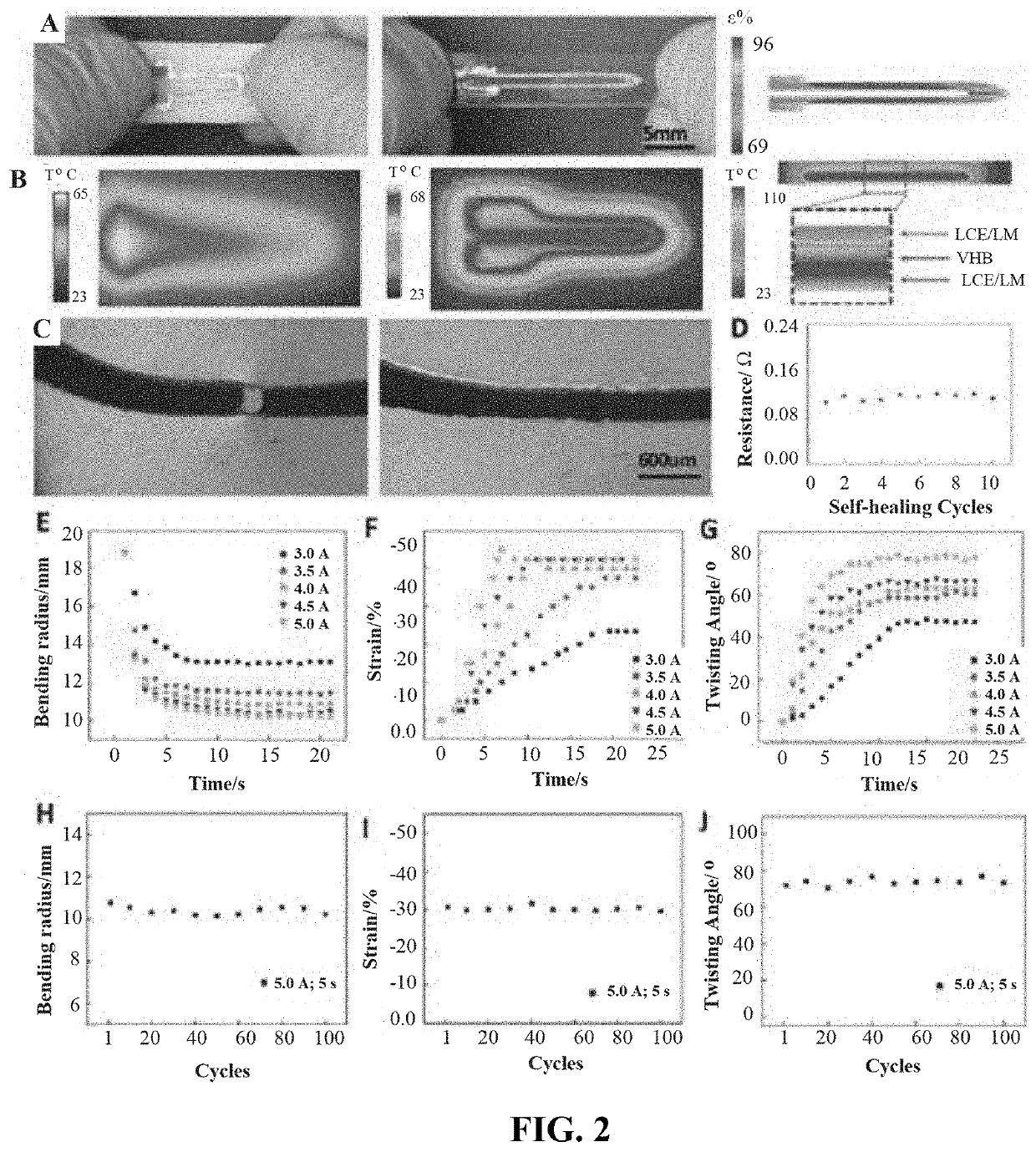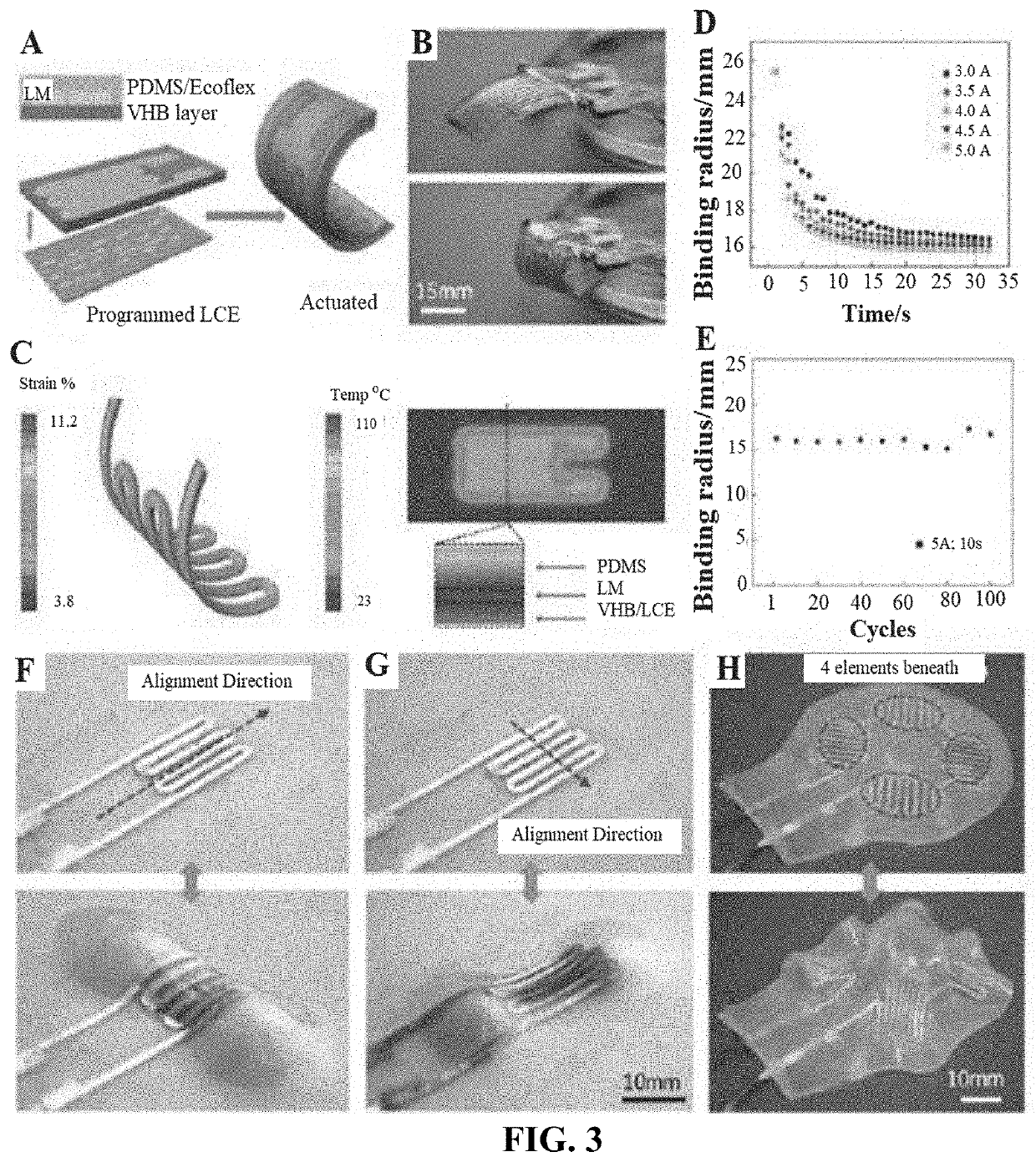Systems and methods of soft robotic actuation with a liquid metal actuator
a technology of soft robotics and actuators, applied in the direction of machines/engines, manufacturing tools, prostheses, etc., can solve the problems of limited mechanical actuation range of motion, significant drawbacks of mechanical actuation, and deformation of mechanical actuation
- Summary
- Abstract
- Description
- Claims
- Application Information
AI Technical Summary
Benefits of technology
Problems solved by technology
Method used
Image
Examples
examples
[0050]The invention is now described with reference to the following Examples. These Examples are provided for the purpose of illustration only, and the invention is not limited to these Examples, but rather encompasses all variations that are evident as a result of the teachings provided herein.
Experimental Setup 1
[0051]Camouflaging, a well-known phenomenon in nature, is widely adopted by animals and plants. Enabling soft robots to blend into their surroundings, however, is not as easy as those naturally-selected creatures make it seem. The main challenges include reversibly mapping designed flat structures into complex 3D topologies and triggering localized texture changes, similar to a muscular hydrostat. A bio-mimetic artificial muscle could be the key to solving this problem. Liquid Crystal Elastomers have proven to be one of the artificial materials most like natural muscle. Moreover, precise controlling and down-scaling of the artificial muscles remains challenging. In our wo...
PUM
| Property | Measurement | Unit |
|---|---|---|
| Temperature | aaaaa | aaaaa |
| Length | aaaaa | aaaaa |
| Electrical resistance | aaaaa | aaaaa |
Abstract
Description
Claims
Application Information
 Login to View More
Login to View More - R&D
- Intellectual Property
- Life Sciences
- Materials
- Tech Scout
- Unparalleled Data Quality
- Higher Quality Content
- 60% Fewer Hallucinations
Browse by: Latest US Patents, China's latest patents, Technical Efficacy Thesaurus, Application Domain, Technology Topic, Popular Technical Reports.
© 2025 PatSnap. All rights reserved.Legal|Privacy policy|Modern Slavery Act Transparency Statement|Sitemap|About US| Contact US: help@patsnap.com



